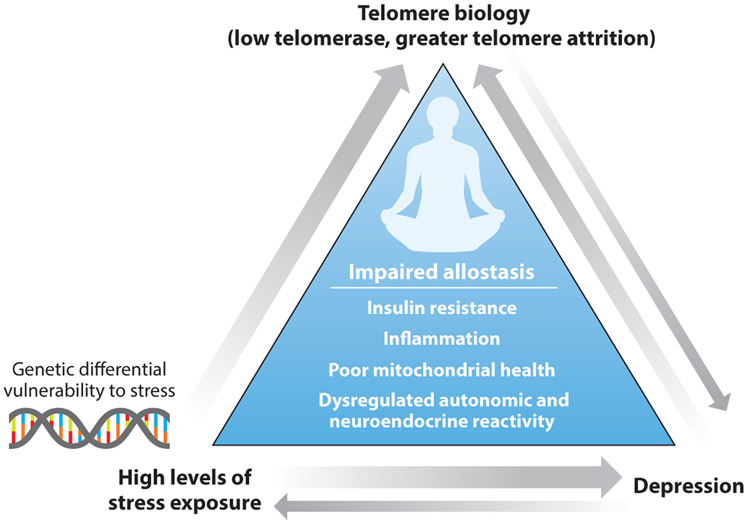Figure 1.
The triad of stress exposure, depression, and telomere biology. This triad illustrates the strength of predictive or causal relationships shown in the literature, represented by arrow thickness. The most consistent and well-established relationships, from both longitudinal studies and experimental animal studies, show that greater exposure to major life stressors, especially early in life, leads to a greater rate of telomere attrition (as well as likelihood of major depression). This is presumably exaggerated if one has genetic loading for greater vulnerability to stress. In turn, major depression is consistently related to shorter telomeres, although fewer studies find that depression leads to a greater rate of shortening over time. While aspects of having major depression can clearly lead to telomere shortening, it is likely that the greater telomere shortness in depression is at least in part the result of cumulative exposure to chronic stress and, consequently, impaired allostasis (stress causing both attrition and depression). People with greater reactivity tend to have faster telomere attrition, but no studies have tested whether telomere shortness predicts greater stress reactivity. There is also the possibility of reverse causation, as one study found that a genotype for low telomerase levels predicts depression. Last, chronic stress, depression, and telomere shortness have all been associated with indices of impaired allostasis.

